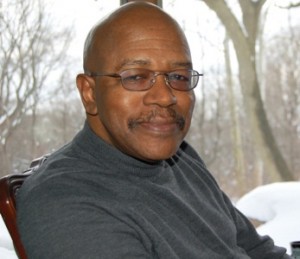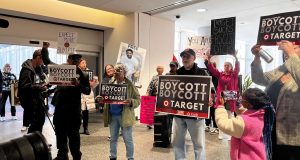Emmett and Trayvon: How Racial Prejudice Has Changed in the Last 60 Years
By Elijah Anderson
Separated by a thousand miles, two state borders, and nearly six decades, two young African- American boys met tragic fates that seem remarkably similar today: both walked into a small market to buy some candy; both ended up dead.
The first boy is Emmett Till, who was 14 years old in the summer of 1955 when he walked into a local grocery store in Money, Miss., to buy gum. He was later roused from bed, beaten brutally, and possibly shot by a group of White men who later dumped his body in a nearby river. They claimed he had stepped out of his place by flirting with a young White woman, the wife of the store’s owner. The second boy is Trayvon Martin, who was 17 years old late last winter when he walked into a 7-Eleven near a gated community in Sanford, Fla., to buy Skittles and an iced tea.
He was later shot to death at close range by a mixed-race man, who claimed Martin had behaved suspiciously and seemed out of place. The deaths of both boys galvanized the nation, drew sympathy and disbelief across racial lines, and, through the popular media, prompted a reexamination of race relations.
In the aftermath of Martin’s death last February, a handful of reporters and columnists, and many members of the general public, made the obvious comparison: Trayvon Martin, it seemed, was the Emmett Till of our times. And, while that comparison has some merit-the boys’ deaths are similar both in some of their details and in their tragic outcome-these killings must also be understood as the result of very different strains of racial tension in America.
The racism that led to Till’s death was embedded in a virulent ideology of White racial superiority born out of slavery and the Jim Crow codes, particularly in the Deep South. That sort of racism hinges on the idea that Blacks are an inherently inferior race, a morally null group that deserves both the subjugation and poverty it gets.
The racial prejudice that led to Trayvon Martin’s death is different. While it, too, was born of America’s painful legacy of slavery and segregation, and informed by those old concepts of racial order-that Blacks have their “place” in society-it in addition reflects the urban iconography of today’s racial inequality, namely the Black ghetto, a uniquely urban American creation. Strikingly, this segregation of the Black community coexists with an ongoing racial incorporation process that has produced the largest Black middle class in history, and that reflects the extraordinary social progress this country has made since the 1960s. The civil rights movement paved the way for Blacks and other people of color to access public and professional opportunities and spaces that would have been unimaginable in Till’s time.
While the sort of racism that led to Till’s death still exists in society today, Americans in general have a much more nuanced, more textured attitude toward race than anything we’ve seen before, and usually that attitude does not manifest in overtly hateful, exclusionary, or violent acts. Instead, it manifests in pervasive mindsets and stereotypes that all Black people start from the inner-city ghetto and are therefore stigmatized by their association with its putative amorality, danger, crime, and poverty. Hence, in public, a Black person is burdened with a negative presumption that he or she must disprove before being able to establish mutually trusting relationships with others.
Most consequentially, Black skin when seen in public, and its association with the ghetto, translates into a deficit of credibility as Black skin is conflated with lower-class status. Such attitudes impact poor Blacks of the ghetto one way and middle-class Black people in another way.
While middle-class Blacks may be able to successfully overcome the negative presumptions of others, lower-class Blacks may not. For instance, all Blacks, particularly “ghetto-looking” young men, are at risk of enduring yet another “stop and frisk” from the police as well as discrimination from potential employers shopkeepers, and strangers on the street. Members of the Black middle class and Black professionals may ultimately pass inspection and withstand such scrutiny; many poorer blacks cannot. And many Blacks who have never stepped foot in a ghetto must repeatedly prove themselves as non-ghetto, often operating in a provisional status (with something more to prove), in the workplace or, say, a fancy restaurant, until they can convince others-either by speaking “White” English or by demonstrating intelligence, poise, or manners-that they are to be trusted, that they are not “one of those” Blacks from the ghetto, and that they deserve respect. In other words, a middle-class Black man who is, for instance, waiting in line for an ATM at night will in many cases be treated with a level of suspicion that a middle-class White man simply does not experience.
But this pervasive cultural association-Black skin equals the ghetto-does not come out of the blue. After all, as a result of historical, political, and economic factors, Blacks have been contained in the ghetto. Today, with persistent housing discrimination and the disappearance of manufacturing jobs, America’s ghettos face structural poverty. In addition, crime and homicide rates within those communities are high, young Black men are typically the ones killing one another, and ghetto culture – made iconic by artists like Tupac Shakur, 50 Cent, and the Notorious B.I.G. – is inextricably intertwined with blackness.
As a result, in America’s collective imagination the ghetto is a dangerous, scary part of the city. It’s where rap comes from, where drugs are sold, where hoodlums rule, and where The Wire might have been filmed. Above all, to many White Americans the ghetto is where “the Black people live,” and thus, as the misguided logic follows, all Black people live in the ghetto. It’s that pervasive, if accidental, fallacy that’s at the root of the wider society’s perceptions of Black people today. While it may be true that everyone who lives in a certain ghetto is Black, it is patently untrue that everyone who is Black lives in a ghetto. Regardless, Black people of all classes, including those born and raised far from the inner cities and those who’ve never been in a ghetto, are by virtue of skin color alone stigmatized by the place.
I call this idea the “iconic ghetto,” and it has become a powerful source of stereotype, prejudice, and discrimination in our society, negatively defining the Black person in public. In some ways, the iconic ghetto reflects the old version of racism that led to Till’s death. In Till’s day, a Black person’s “place” was in the field, in the maid’s quarters, or in the back of the bus. If a Black man was found “out of his place,” he could be punished, jailed, or lynched. In Martin’s day-in our day-a Black person’s “place” is in the ghetto. If he is found “out of his place,” like in a fancy hotel lobby, on a golf course, or, say, in an upscale community, he may easily be mistaken, treated with suspicion, avoided, pulled over, frisked, arrested-or worse.
Trayvon Martin’s death is an example of how this more current type of racial stereotyping works. While the facts of the case are still under investigation, from what is known it seems fair to say that George Zimmerman, Martin’s killer, saw a young Black man wearing a hoodie and assumed he was from the ghetto and therefore “out of place” in the Retreat at Twin Lakes, Zimmerman’s gated community. Until recently, Twin Lakes was a relatively safe, largely middle-class neighborhood. But as a result of collapsing housing prices, it has been witnessing an influx of renters and a rash of burglaries. Some of the burglaries have been committed by Black men. Zimmerman, who is himself of mixed race (of Latino, Black, and White descent), did not have a history of racism, and his family has claimed that he had previously volunteered handing out leaflets at Black churches protesting the assault of a homeless Black man.
The point is, it appears unlikely that Zimmerman shot and killed Martin simply because he hates Black people as a race. It seems that he put a gun in his pocket and followed Martin after making the assumption that Martin’s Black skin and choice of dress meant that he was from the ghetto, and therefore up to no good; he was considered to be a threat. And that’s an important distinction.
Zimmerman acted brashly and was almost certainly motivated by assumptions about young black men, but it is not clear that he acted brutally out of hatred for Martin’s race. That certainly does not make Zimmerman’s actions excusable, Till’s murderers acted out of racial hatred.
The complex racially charged drama that led to Martin’s death is indicative of both our history and our rapid and uneven racial progress as a society. While there continue to be clear demarcations separating Blacks and Whites in social strata, major racial changes have been made for the better. It’s no longer uncommon to see Black people in positions of power, privilege, and prestige, in top positions in boardrooms, universities, hospitals, and judges’ chambers, but we must also face the reality that poverty, unemployment, and incarceration still break down largely along racial lines.
This situation fuels the iconic ghetto, including a prevalent assumption among many White Americans, even among some progressive Whites who are not by any measure traditionally racist, that there are two types of Blacks: those residing in the ghetto, and those who appear to have played by the rules and become successful. In situations in which Black people encounter strangers, many often feel they have to prove as quickly as possible that they belong in the latter category in order to be accepted and treated with respect.
As a result of this pervasive dichotomy-that there are “ghetto” and “non-ghetto” Blacks-many middle-class Blacks actively work to separate and distance themselves from the popular association of their race with the ghetto by deliberately dressing well or by spurning hip-hop, rap, and ghetto styles of dress. Similarly, some Blacks, when interacting with Whites, may cultivate an overt, sometimes unnaturally formal way of speaking to distance themselves from “those” black people from the ghetto.
But it’s also not that simple. Strikingly, many middle class Black young people, most of whom have no personal connection with the ghetto, go out of their way in the other direction, claiming the ghetto by adopting its symbols, including styles of dress, patterns of speech, or choice of music, as a means of establishing their authenticity as “still Black” in the largely White middle class they feel does not fully accept them; they want to demonstrate they have not “sold out.” Thus, the iconic ghetto is, paradoxically, both a stigma and a sign of authenticity for some American Blacks-a kind of double bind that beleaguers many middle-class Black parents.
Despite the significant racial progress our society has made since Till’s childhood, from the civil rights movement to the re-election of President Obama, the pervasive association of Black people with the ghetto, and therefore with a certain social station, betrays a persistent cultural lag. After all, it has only been two generations since schools were legally desegregated and five decades since Blacks and Whites in many parts of the country started drinking from the same water fountains.
If Till were alive today, he’d remember when restaurants had “White Only” entrances and when stories of lynchings peppered The New York Times. He’d also remember the Freedom Riders, Martin Luther King Jr., and the Million Man March. He’d remember when his peers became generals and justices, and when a Black man, just 20 years his junior, became president of the United States. As I am writing, he would have been 73 – had he lived.
Elijah Anderson is the William K. Lanman Jr. Professor of Sociology at Yale University. His latest book is The Cosmopolitan Canopy: Race and Civility in Everyday Life. This article, the second of an 11-part series on race, is sponsored by the W. K. Kellogg Foundation and was originally published by the Washington Monthly Magazine.
 Westside Story Newspaper – Online The News of The Empire – Sharing the Quest for Excellence
Westside Story Newspaper – Online The News of The Empire – Sharing the Quest for Excellence




